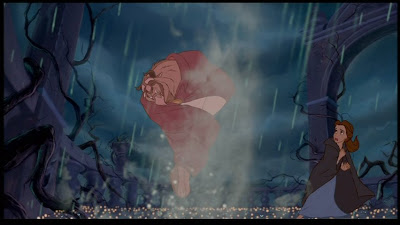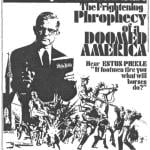
Beauty and the Beast is, on one level, about finding the goodness within a person despite his or her outer appearance. At the end of the story, the Beast is transformed back into a handsome prince, and while I have never read the original stories, I imagine it would be relatively easy to accept the transition in literary form: because the reader has had to imagine the Beast all along, the reader has been able to imagine the soul within the Beast as surely as the reader has been imagining the Beast’s physical appearance. And so, when the Beast changes on the outside, it shouldn’t be too hard to hold on to that which has stayed the same on the inside. The mind’s eye can focus on whatever it wants.
Movie versions of this story, on the other hand, have always had some difficulty with the transition at the end. Because film is a visual medium, the viewer tends to pay particular attention to the appearance of the Beast — and, if we come to love him as a character, then we tend to love his appearance, as well. His outward, incarnate form becomes part of who and what he is, to us. (It probably doesn’t help that the handsome prince who “replaces” the Beast can all too easily look kind of cheesy, or that individual viewers may have different standards of physical perfection by which to judge him.)
Case in point: When Jean Cocteau’s version of Beauty and the Beast had its premiere in 1946, and the transformation occurred at the end, it is said that either Marlene Dietrich or Greta Garbo exclaimed, “Where is my beautiful Beast?” or, “What have you done with my Beast?” Apocryphal as that story might be, it certainly captures the reaction of many viewers to the climax of that film. But in that case, at least, the let-down was intentional: Cocteau reportedly wrote that he wanted “to make the Beast so human, so sympathetic, so superior to men, that his transformation into Prince Charming would come as a terrible blow to Beauty.”
I doubt the Disney version, released in 1991, was intended to be as subversive or disorienting as all that. In fact, Glen Keane, the animator responsible for the Beast, talks on the movie’s DVD about how his treatment of that scene was informed by his Christian faith and by that bit in the Bible that talks about people becoming “new creations”. Be that as it may, however, many people have still found the transformation somewhat disappointing. The lovable monster has still, in one sense, become just another human being.
And why does this all come to mind now? Because today my kids were watching the Disney film while I was getting dinner ready, and at one point I heard my daughter say, with a hint of sadness or concern in her voice, “The Beast gone!” (She has seen the film before, but she can still react to each development as though she were seeing it for the first time.) I replied that he was still there, but now he was a man. There was an awkward pause as my daughter processed this, and then, with a deliberate excitement which suggested that she was not yet fully convinced but she felt obliged to play along anyway, she said, “Man!”
I don’t have a particularly deep point to make, here. But I did find it interesting to hear my daughter, who is not yet 3 years old, issue a very similar lament to the one that has long been credited to Dietrich and Garbo.












